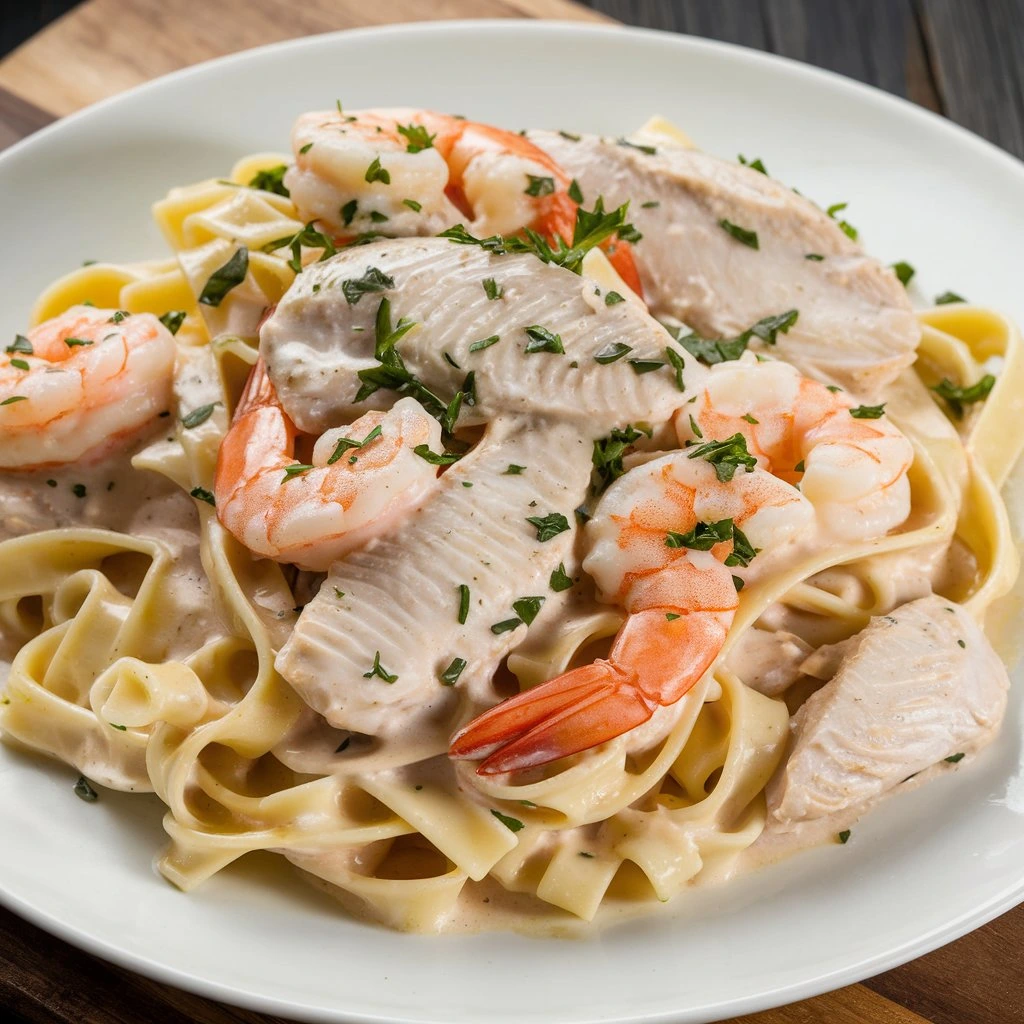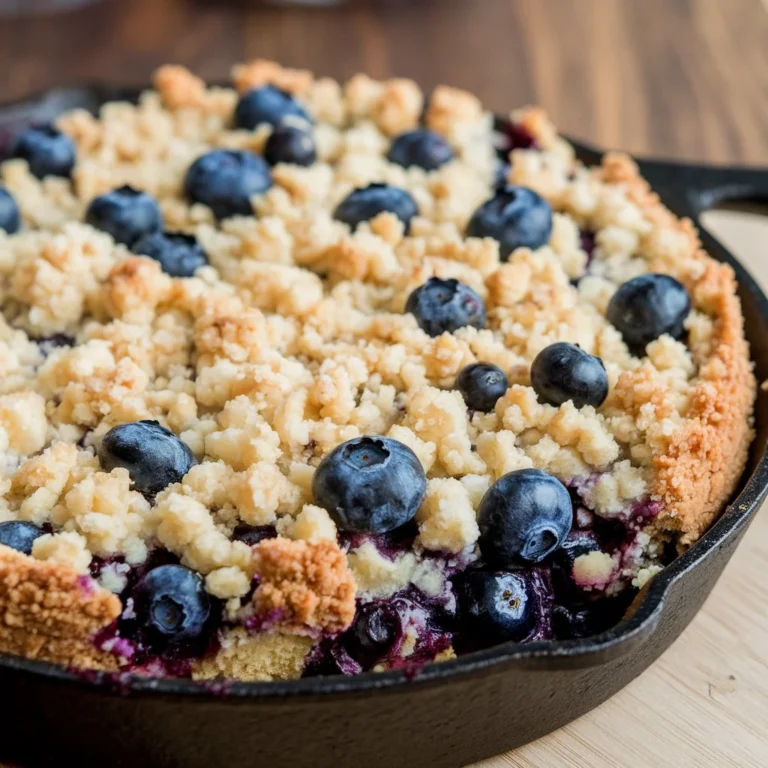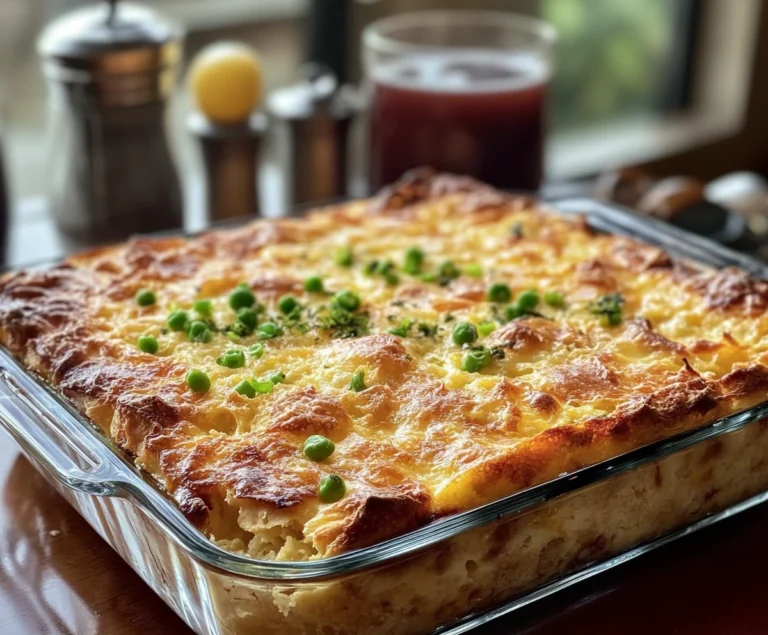What’s the Difference Between Chicken Alfredo and Carbonara?
What’s the Difference Between Chicken Alfredo and Carbonara?
Pasta dishes have captured the hearts (and taste buds) of people around the world. Two of the most popular choices are Chicken Alfredo and Carbonara, both creamy and savory dishes that provide comfort and indulgence. Although these pasta recipes might seem similar at first glance, the key differences in their ingredients, techniques, and cultural origins make each one unique.
In this detailed guide, we will take a closer look at Chicken Alfredo and Carbonara, their distinct features, how they compare nutritionally, the variations available, and their cultural significance. By the end, you will have a deeper understanding of these pasta classics and be able to decide which dish to cook depending on your mood or preference.
Table of Contents
- What Is Chicken Alfredo?
- History of Chicken Alfredo
- Key Ingredients
- Preparation Techniques
- What Is Carbonara?
- The Origins of Carbonara
- Key Ingredients
- Preparation Techniques
- Key Differences Between Chicken Alfredo and Carbonara
- Ingredient Differences
- Cooking Methods
- Flavor Profiles
- Cultural Context
- Variations of Chicken Alfredo and Carbonara
- Popular Twists on Chicken Alfredo
- Regional and Modern Twists on Carbonara
- Nutritional Comparison: Which Is Healthier?
- Calories, Fat, and Protein Content
- Healthier Alternatives
- Frequently Asked Questions
- Is Chicken Alfredo or Carbonara better for weight loss?
- What can I substitute in Alfredo or Carbonara?
- Why doesn’t traditional Carbonara use cream?
- Conclusion
1. What Is Chicken Alfredo?
History of Chicken Alfredo
Chicken Alfredo is a dish that originated in Italy but was popularized and adapted in the United States. The story of Alfredo dates back to Rome in the early 1900s when a chef named Alfredo di Lelio created fettuccine Alfredo for his pregnant wife. Alfredo’s version of the dish was simple, made only with fettuccine pasta, butter, and Parmesan cheese. This early rendition was creamy and rich, despite the absence of cream in the sauce.
When Alfredo made its way to the U.S., it underwent significant changes to meet the American palate. Heavy cream was introduced, making the sauce thicker and creamier. The addition of chicken transformed the dish into a more hearty meal, perfect for a main course in American households.
Today, Chicken Alfredo is a staple in Italian-American cuisine and is found in homes and restaurants across the globe. Its creamy texture, buttery flavor, and satisfying portion of chicken make it a comforting favorite.
Key Ingredients
The most common ingredients used in Chicken Alfredo include:
- Fettuccine pasta
- Grilled or sautéed chicken
- Heavy cream (Americanized version)
- Butter
- Parmesan cheese
- Garlic (optional)
- Salt and black pepper
Optional ingredients that are often added include broccoli, mushrooms, or even spinach for a lighter version of the dish.
Preparation Techniques
Preparing Chicken Alfredo is relatively straightforward, making it a popular choice for home cooks. The dish typically involves the following steps:
- Cook the pasta: Start by boiling fettuccine in salted water until al dente.
- Prepare the sauce: In a large pan, butter is melted, and heavy cream is added. The mixture is simmered gently before Parmesan cheese is whisked in to create a creamy sauce.
- Cook the chicken: While the sauce is being prepared, chicken breasts are grilled or sautéed until fully cooked. The chicken is then sliced or shredded before being combined with the pasta and sauce.
- Combine: The cooked pasta is tossed in the sauce, and the chicken is added. Season with salt, pepper, and optionally garlic for added flavor.
This dish is rich and satisfying, and many home cooks appreciate the flexibility of adding vegetables like broccoli or peas to balance the richness.
2. What Is Carbonara?
The Origins of Carbonara
While Chicken Alfredo has roots in Italy but was adapted in the U.S., Carbonara is a purely Italian dish, originating from the Lazio region of Rome. Unlike Alfredo, which evolved significantly after crossing borders, Carbonara remains a traditional Italian classic. It is often associated with Roman cuisine and is thought to have been created by Italian coal miners, hence the name “carbonara” (which translates to “charcoal burner” in Italian).
Traditional Carbonara is known for its rich and savory flavor but, notably, does not include cream. The sauce is made from eggs, Pecorino Romano, and rendered fat from guanciale or pancetta. The simplicity of this dish reflects Italian cuisine’s focus on high-quality ingredients and simple preparation methods.
Key Ingredients
- Spaghetti (or other long pasta)
- Guanciale or pancetta (Italian cured pork)
- Egg yolks
- Pecorino Romano (or Parmesan)
- Black pepper
- Salt
One of the most notable aspects of Carbonara is that it doesn’t rely on cream for its texture. The creamy sauce comes entirely from the emulsification of egg yolks with the rendered fat from the guanciale or pancetta.
Preparation Techniques
The process of making Carbonara is simple but requires precision to ensure the eggs form a creamy sauce without scrambling. Here’s how the dish is typically prepared:
- Cook the pasta: Boil the pasta in salted water until al dente.
- Render the pork: Guanciale or pancetta is fried until crispy in its own fat. No oil is necessary as the pork releases enough fat to flavor the dish.
- Mix the eggs and cheese: Egg yolks are whisked together with grated Pecorino Romano and a generous amount of black pepper.
- Combine pasta and sauce: Once the pasta is ready, it is added to the pan with the crispy guanciale. Off the heat, the egg and cheese mixture is quickly stirred in, allowing the residual heat of the pasta to cook the eggs without scrambling them. This step is critical to achieving the creamy texture of the sauce.
3. Key Differences Between Chicken Alfredo and Carbonara
While both Chicken Alfredo and Carbonara are beloved pasta dishes, they differ significantly in ingredients, preparation, and overall flavor profile. Below, we break down the key differences in more detail.
Ingredient Differences
- Protein: The most obvious difference is the protein source. Chicken Alfredo uses grilled or sautéed chicken, whereas Carbonara features guanciale or pancetta (Italian cured pork).
- Sauce Base: Chicken Alfredo is a cream-based sauce, relying on heavy cream and butter to form its rich texture. On the other hand, Carbonara relies on eggs and the rendered fat from pancetta to create its creamy sauce.
- Cheese: Alfredo primarily uses Parmesan cheese, while Carbonara is made with Pecorino Romano, a sharper and saltier cheese that complements the richness of the pork.
- Add-ins: Chicken Alfredo often incorporates vegetables like broccoli or mushrooms for added nutrition, while Carbonara typically sticks to its core ingredients with few variations.
Cooking Methods
- Simplicity vs. Technique: While Chicken Alfredo can be relatively straightforward to prepare, with the sauce being simmered over low heat, Carbonara requires more technical precision. The heat from the pasta needs to be enough to cook the egg yolks without scrambling them, making the timing critical in Carbonara.
- Rendering Fat: In Carbonara, cooking the pancetta or guanciale properly to release enough fat is key to flavoring the dish. In Chicken Alfredo, the focus is more on creating a rich sauce from the combination of butter, cream, and cheese.
Flavor Profiles
- Chicken Alfredo: The flavor of Chicken Alfredo is rich, creamy, and comforting. It’s mild, with the butter and cream providing the primary flavor components, while Parmesan cheese adds a savory note. When cooked with chicken, the dish becomes a hearty, satisfying meal.
- Carbonara: Carbonara offers a more complex flavor profile. The savory and slightly smoky flavor of the pancetta or guanciale contrasts with the creaminess from the egg yolks and sharp, salty Pecorino Romano. Black pepper plays an important role in balancing the dish, providing just enough spice to elevate the other flavors.
Cultural Context
While both dishes are beloved around the world, their cultural origins set them apart:
- Chicken Alfredo became a symbol of Italian-American cuisine, adapted to American tastes with the inclusion of cream and additional ingredients like chicken and vegetables. The dish is often associated with comfort food and is commonly served in Italian-American restaurants.
- Carbonara, however, is a traditional Roman dish with strong ties to Italian culinary history. The simplicity of its ingredients and focus on technique reflect the values of traditional Italian cuisine. Purists often frown upon modern adaptations, especially those that include cream, as it strays from the authentic recipe.
4. Variations of Chicken Alfredo and Carbonara
Popular Twists on Chicken Alfredo
Due to its versatility, Chicken Alfredo has inspired numerous variations that range from healthier options to more indulgent renditions. Here are some of the most common twists:
- Vegetable Alfredo: Adding vegetables like broccoli, spinach, or peas to Chicken Alfredo is a popular way to incorporate more nutrients while balancing the richness of the sauce.
- Seafood Alfredo: Swap out the chicken for seafood like shrimp or salmon for a lighter, more elegant take on Alfredo. This version is common in many seafood restaurants and adds a coastal twist to the classic dish.
- Lighter Alfredo: For a healthier alternative, many cooks replace the heavy cream with milk or a milk-cream hybrid to cut down on calories and fat content. Greek yogurt or cottage cheese can also be used to lighten up the sauce while still maintaining its creamy consistency.
- Spicy Alfredo: For those who love a bit of heat, Chicken Alfredo can be made spicier by adding ingredients like red pepper flakes or Cajun seasoning to the sauce.
Regional and Modern Twists on Carbonara
While purists prefer to stick to the traditional Carbonara recipe, modern chefs and home cooks have developed several variations of the dish:
- Creamy Carbonara: Though not traditional, many restaurants (especially outside of Italy) have introduced cream into their Carbonara recipes, making the sauce even richer. This version is often seen in Americanized Italian restaurants.
- Vegetarian Carbonara: By replacing the pancetta or guanciale with vegetarian substitutes like mushrooms or tempeh bacon, Carbonara can be adapted for vegetarians. While not authentic, this variation has become popular among those seeking a meat-free alternative.
- Bacon Carbonara: In regions where guanciale or pancetta is difficult to find, many cooks substitute bacon for the cured pork. Although bacon adds a different flavor profile, it’s a convenient and widely accepted substitute.
- Vegan Carbonara: A growing trend is the creation of vegan versions of Carbonara using plant-based ingredients. Vegan bacon made from tempeh or mushrooms, along with egg yolk substitutes like nutritional yeast, allow vegans to enjoy a cruelty-free version of this classic dish.
5. Nutritional Comparison: Which Is Healthier?
While both dishes are considered indulgent, Carbonara tends to be lighter in terms of overall calorie content. However, the nutritional values depend heavily on portion sizes, specific ingredients used, and preparation methods.
Calories, Fat, and Protein Content
- Calories: On average, a serving of Chicken Alfredo contains more calories due to the high-fat content from the cream and butter. A typical serving of Chicken Alfredo can range from 800 to over 1,200 calories, depending on the portion size and ingredients.
By comparison, Carbonara is usually lighter in calories. A serving typically ranges from 500 to 800 calories, depending on the amount of pancetta or guanciale used and whether any additional fats are added.
- Fat Content: Again, Chicken Alfredo generally contains more fat due to the large amounts of heavy cream and butter used in the sauce. On the other hand, Carbonara relies more on the fat from the pancetta or guanciale, which can be lower in fat when compared to cream.
- Protein: Both dishes are relatively high in protein. However, Chicken Alfredo often has the edge due to the inclusion of grilled chicken, which provides a substantial amount of lean protein. Carbonara still contains a decent amount of protein, thanks to the eggs and pancetta, but usually offers slightly less.
Healthier Alternatives
There are numerous ways to make both dishes healthier:
- For Chicken Alfredo:
- Replace heavy cream with a lighter dairy option, such as half-and-half, whole milk, or a non-dairy substitute.
- Incorporate vegetables like broccoli or zucchini to add fiber and nutrients while cutting down on pasta portions.
- Use lean cuts of chicken breast or swap in shrimp or turkey for lower-fat protein options.
- For Carbonara:
- Consider using a smaller portion of pancetta or guanciale to reduce the fat content, or substitute with turkey bacon.
- For a vegetarian or vegan option, you can use mushrooms or tofu to replace the meat.
- Swap out some of the Pecorino Romano or Parmesan for a lower-fat cheese alternative, though this will affect the flavor.
6. Frequently Asked Questions
Is Chicken Alfredo or Carbonara Better for Weight Loss?
If you’re looking for a dish that fits into a weight loss plan, Carbonara may be the better option due to its generally lower calorie count and the absence of heavy cream. However, both dishes can be modified to suit a lower-calorie diet. For example, you can reduce the portion size of the pasta or use whole grain pasta for added fiber.
What Can I Substitute in Alfredo or Carbonara?
Both dishes are flexible when it comes to ingredient substitutions:
- In Chicken Alfredo, you can substitute heavy cream with milk or a plant-based alternative to reduce the fat content. You can also switch out the chicken for other proteins like shrimp or tofu, or add vegetables to increase the nutritional value.
- For Carbonara, the traditional guanciale can be replaced with bacon, pancetta, or even a vegetarian alternative like mushrooms. Vegans can substitute eggs with nutritional yeast and plant-based milk to create a creamy, animal-free sauce.
Why Doesn’t Traditional Carbonara Use Cream?
Authentic Carbonara doesn’t use cream because the eggs and the fat from the pancetta or guanciale create the necessary creaminess. Adding cream is a modern adaptation that strays from the traditional recipe, which emphasizes the simplicity of just a few high-quality ingredients. Purists argue that adding cream dilutes the true flavors of Carbonara and masks the richness of the eggs and Pecorino Romano.
7. Conclusion
While Chicken Alfredo and Carbonara are both rich and flavorful pasta dishes, they cater to different tastes and preferences. Chicken Alfredo offers a creamy, buttery flavor profile that is enhanced with the addition of heavy cream, while Carbonara showcases the savory richness of eggs, pancetta, and Pecorino Romano without relying on cream. Both dishes are versatile and can be adapted to suit dietary preferences or nutritional needs, making them ideal options for a variety of meals.
Whether you prefer the richness of Chicken Alfredo or the bold flavors of Carbonara, understanding the key differences between the two will allow you to appreciate and enjoy these classic dishes even more.







